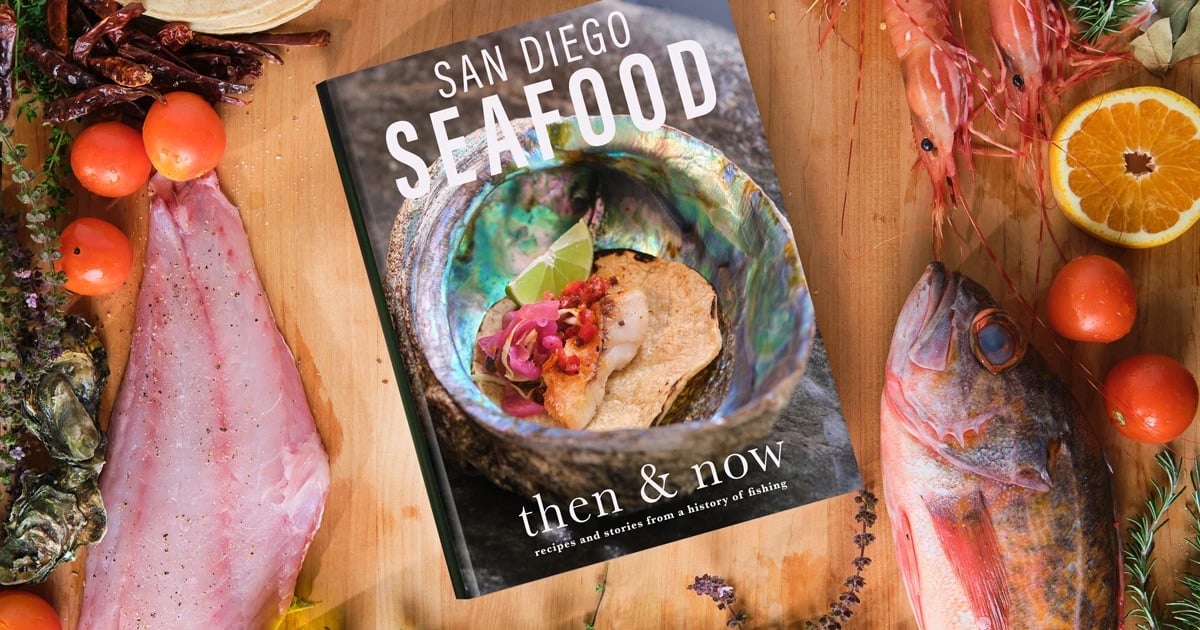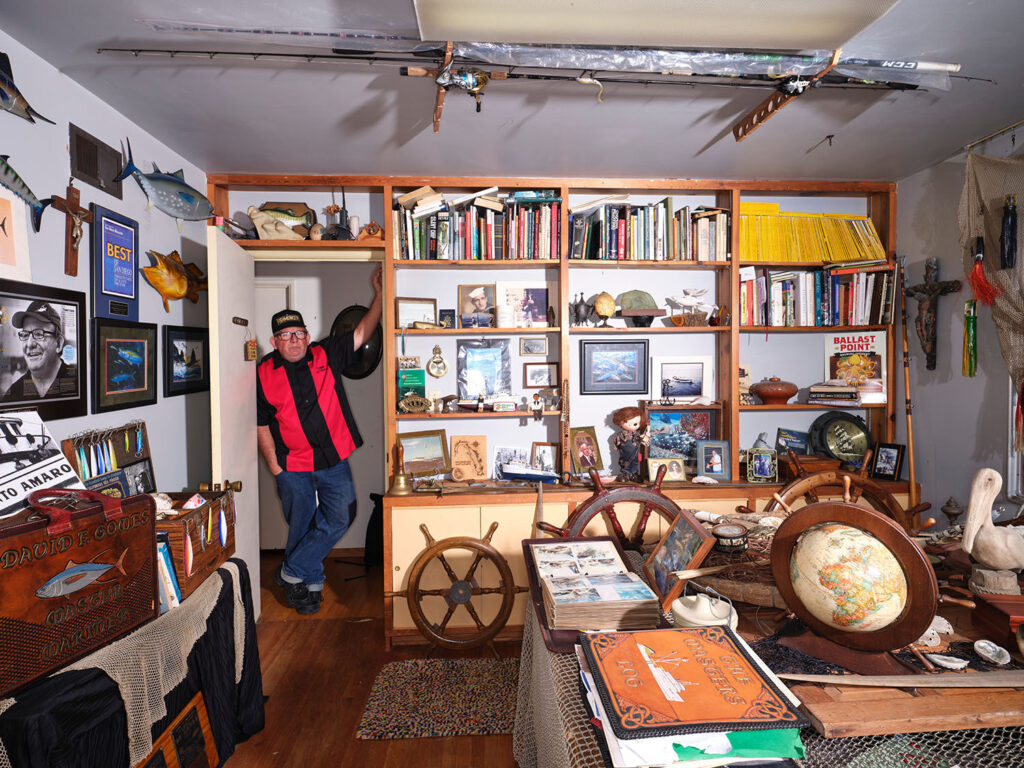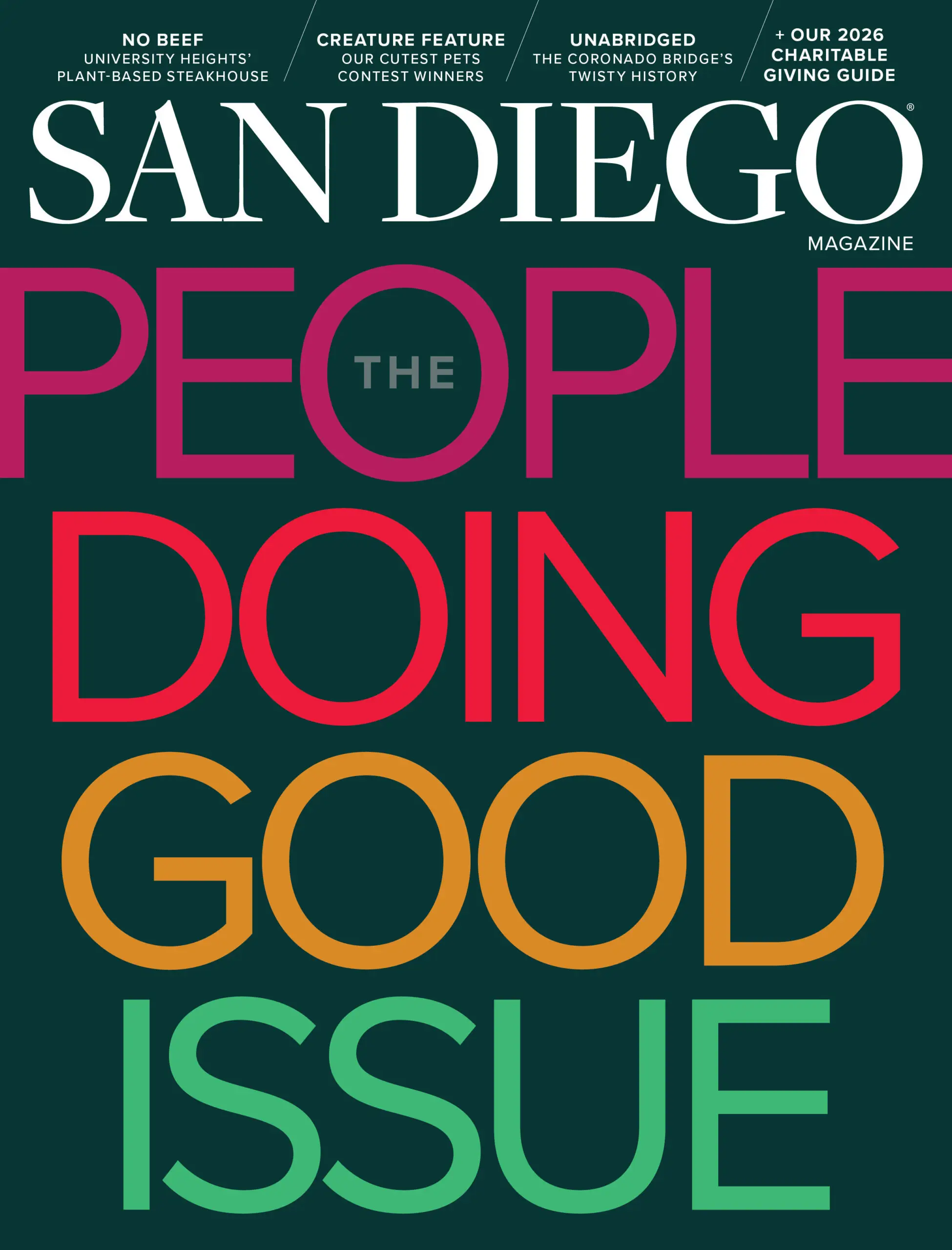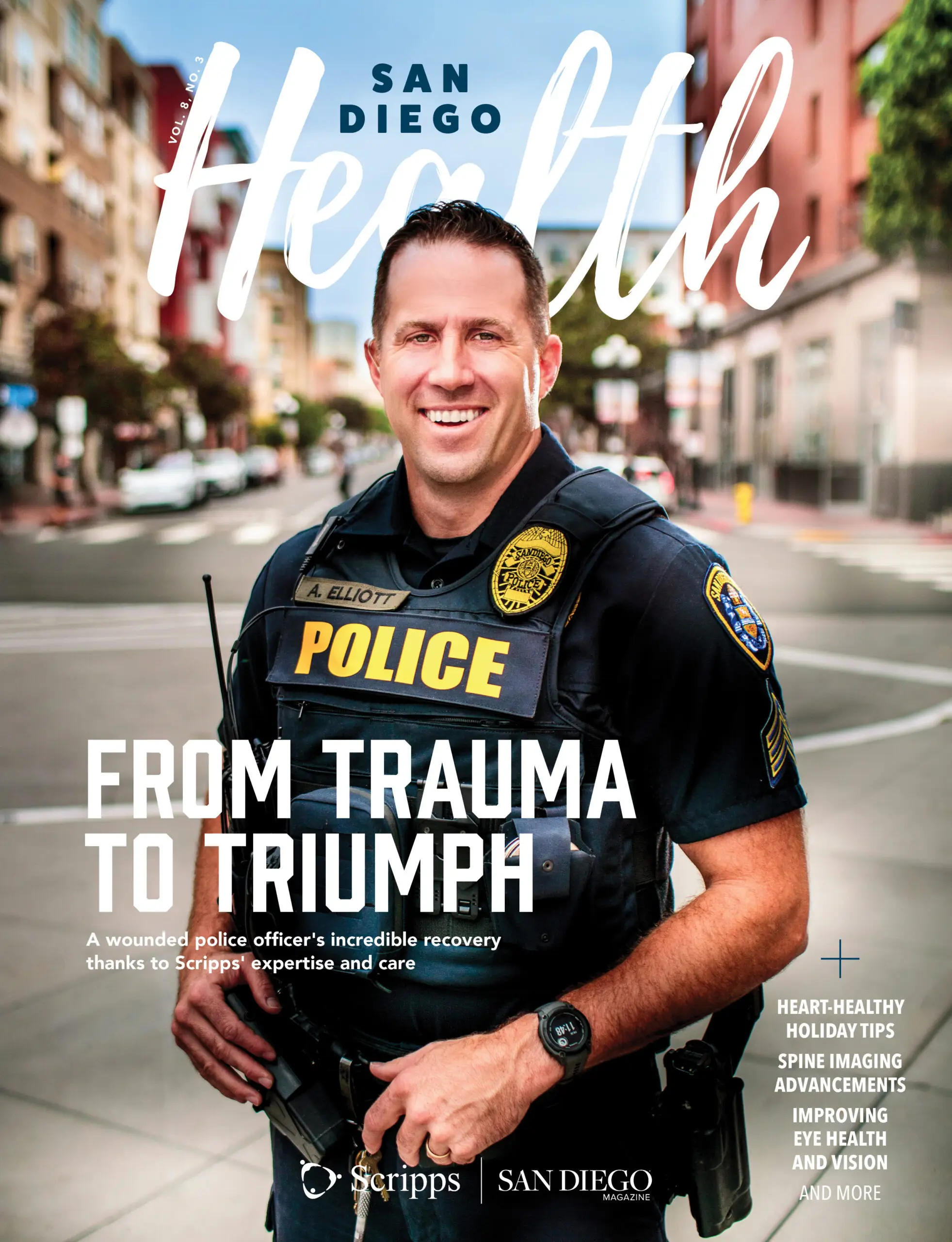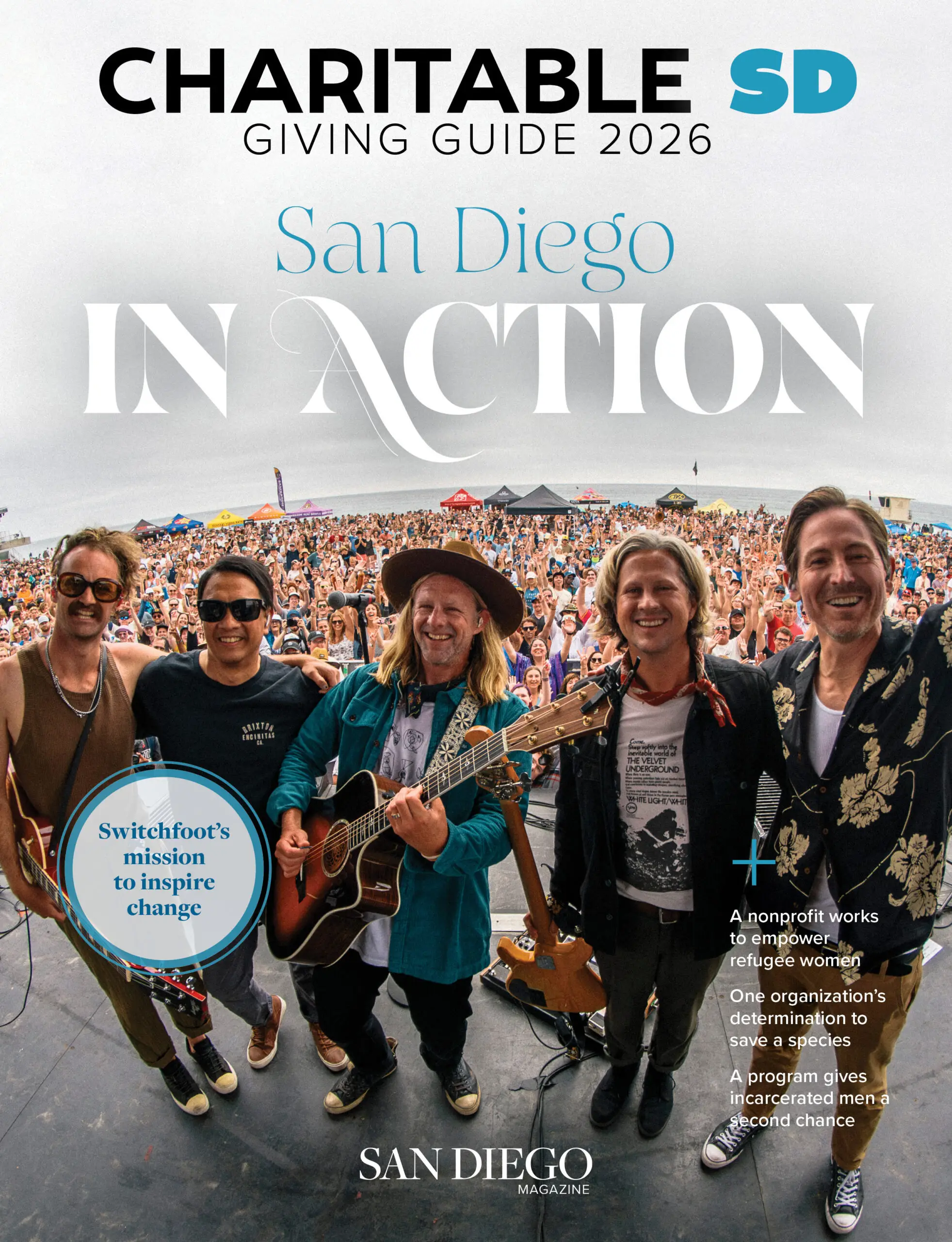San Diego is the city that tuna built. And two local experts—photographer Chris Rov Costa and coastal specialist Theresa Talley—are shining a light on its storied fishing past and sustainable future in their new book, San Diego Seafood: Then and Now.
The book, still in its IndieGoGo phase of life after being fully produced, captures San Diego’s transformation from its days as the “tuna capital of the world” to its current role as a hub for sustainable fishing practices. Chris and Theresa blend personal stories, historical insights, and forward-thinking solutions into a rich exploration of the region’s seafood culture and they’re our guests on today’s episode of Happy Half Hour.
The book was partly supported by California Sea Grant and other project partners and includes contributions from San Diego historians, fishing families, artists, scientists, at-home chefs, and celebrity chefs like Davin Waite, Travis Swikard, Natalie Sawyer, and Drew Deckman.
“Tuna money built San Diego,” Chris says, explaining how the industry shaped the city’s early development, from Westgate Field in Mission Valley to Point Loma High School. Local fishing families contributed to infrastructure and laid the foundation for the city’s restaurant scene, with icons like Anthony’s and The Fishery, which are still open today.
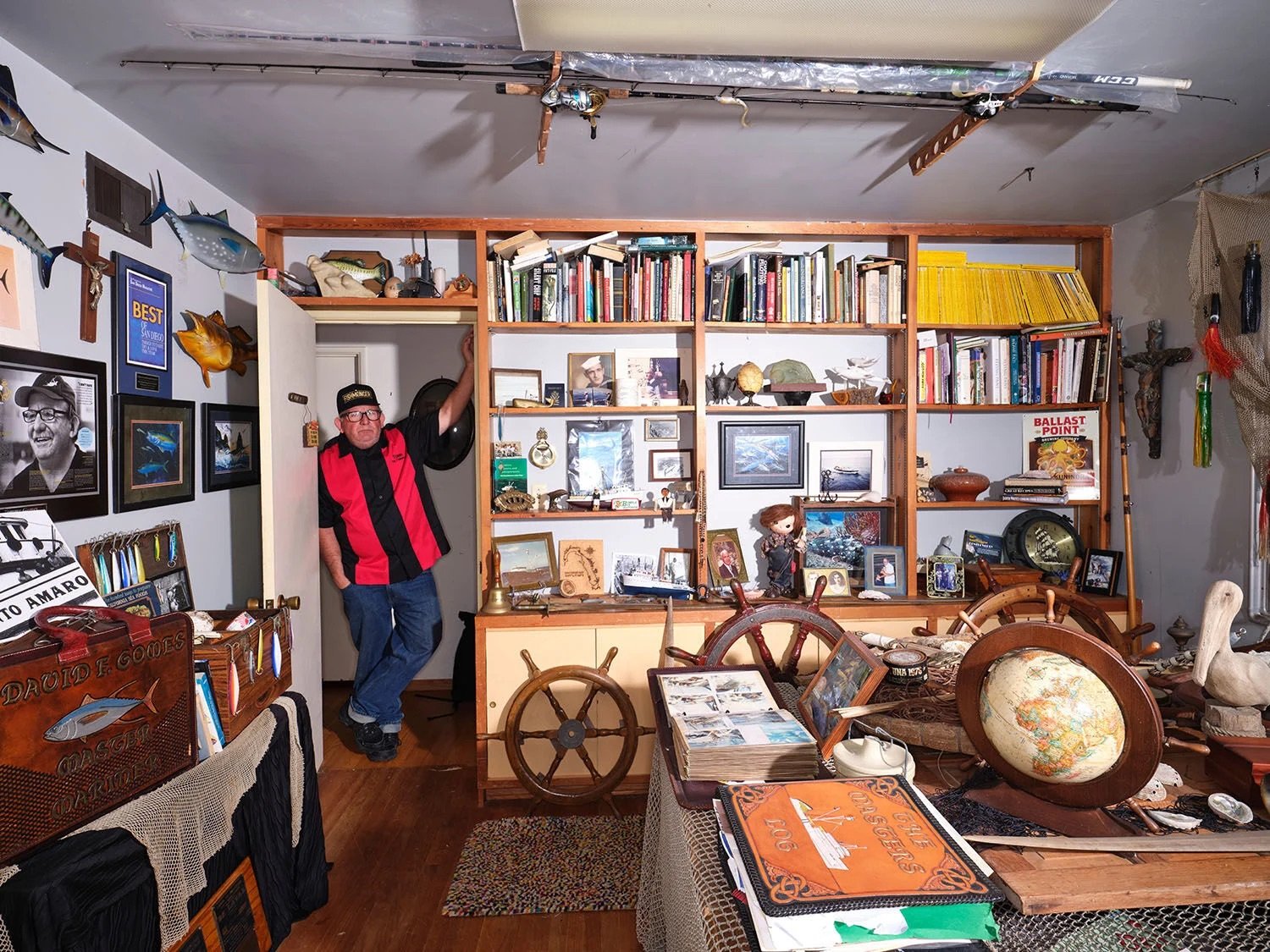
But things shifted dramatically in the 1980s when regulations to protect dolphins, along with other environmental changes, drove many of San Diego’s tuna boats to foreign waters. “We became the most highly regulated fishing fleet in the world, but doing it sustainably is far more expensive,” Chris explains of San Diego’s fishing fleet. Many local operations shut down or moved overseas, leaving cheaper, less-regulated seafood imports to flood the market.
In San Diego Seafood: Then and Now, Theresa and Chris explore this critical turning point and the community’s response to rebuilding a local, sustainable seafood system: “Sustainability became tough for consumers. When frozen tilapia costs 10 cents a pound and local halibut is $10 a pound, affordability is a real issue,” Theresa says.
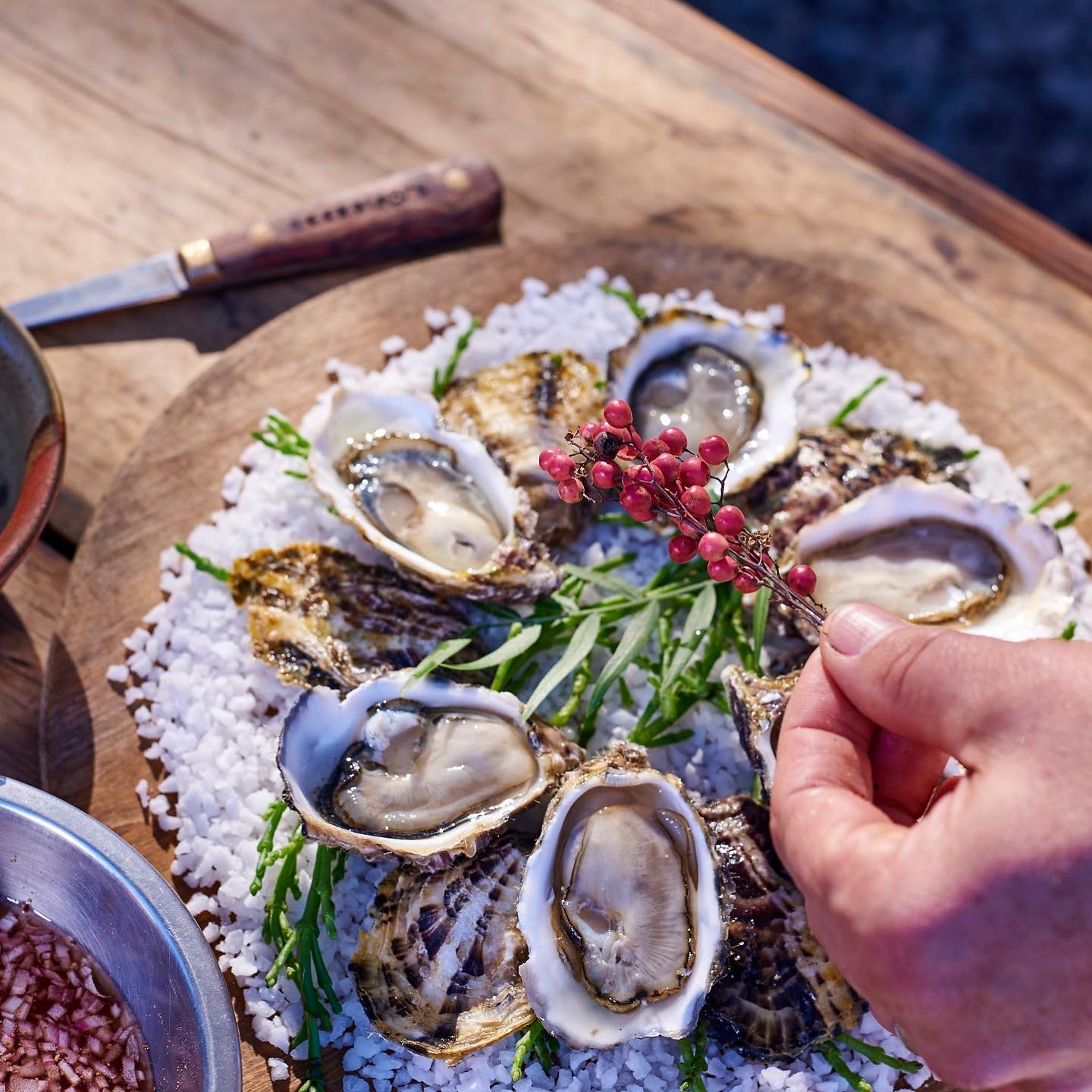
Their book highlights modern heroes of San Diego’s seafood revival, including Tommy Gomes of Tunaville Market & Grocery and chefs like JoJo Ruiz at Lionfish and Trey Foshee at George’s at the Cove. These figures work with local fishermen, who often bring fresh, locally caught fish directly to their restaurants.
“Chefs like Travis Swikard at Callie are getting swordfish delivered directly from local boats,” Chris says. He thinks, like we do and so do the chefs who operate like this, that it’s a meaningful exercise in operating sustainably and also an example to set for diners who may not have known that you can buy direct from fish boats in San Diego.
The book also includes fascinating chapters on San Diego’s diverse fishing cultures—from the Kumeyaay’s ancient methods to Portuguese, Italian, Japanese, and Chinese fishing communities—and how they all contributed to the city’s rich seafood heritage.
Packed with photography, recipes, and expert insights, San Diego Seafood: Then and Now isn’t just a history lesson but a call to action. “We want to reconnect people to their food, their culture, and their community,” says Theresa. The book is both a celebration of the past and a blueprint for a sustainable future, making it essential reading for anyone passionate about food, sustainability, or the unique culture of San Diego’s coast.
Once the book is fully funded and after production costs are covered, proceeds will be donated to San Diego Fishermen’s Working Group, MAKE Projects, and Indigenous Futures Institute, UC San Diego.















